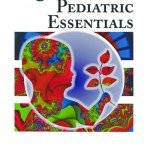It’s Time for “Social Closure”: Knowing the Stakes
David Schleich, PhD
Everyone talks in our world about how the naturopathic profession has momentum, now more than ever. Some feel that the momentum is fragile and has been long in the works, requiring diligence and caution; others experience it has unstoppable. For a long time, scholars of “professional formation” have been watching us and we would be wise to note what they see. Larson (1977), for example, explains how the social sciences provide a framework for describing and understanding the concept of the professions in civil society, and how an occupation tries to “translate one category of scarce resources – special knowledge and skills – into another – social and economic rewards” (xvii). Richardson (1985, 1987, 1989) refines our understanding of this process, reminding us that “it is axiomatic that professionals possess a complex set of techniques which requires time and training to master” (p. 45). A profession takes shape, he adds, around its ability to codify knowledge and standardize the training of its practitioners (p. 45). Murphy (1988) demonstrates how “social closure” and “monopolization and exclusion” ensue for professional groups successful in structuring, transmitting and codifying their knowledge and specialized skills. Richardson (1987, 1989) further clarifies aspects of closure of a profession, a phenomenon very much in play in the evolution of primary health care in the U.S. and Canada.
Indeed, critical to us is understanding the power and importance of that codified body of knowledge and its transmission “through meritocratic institutions, such as universities.” If these conditions are in place, the government will “grant the profession a monopoly on the practice of these skills” (p. 45). How professional knowledge is structured, Richardson (1992) emphasizes, and the educational pathways established for that profession, together generate “instrumental consequences for the profession” (p. 45).
Elsewhere, Richardson (1985) states that despite the educational practices and policies of a profession, “independently of the technical power of the profession’s knowledge base and the efficacy of any particular pedagogy for transferring this knowledge to new generations of practitioners” (p. 45), there is an essential symbolic link “between the actions of the profession and the values of key actors in the environment” (Richardson, 1985, p. 146). Edelman (1964) established much earlier a contextualizing conversation for students of the professions about those actors in their environments, focusing on their symbolic uses of policy. Richardson (1985) builds on this important benchmarking work in his discussion of the symbolic and substantive elements that legitimize professional practice.
In addition, Larson (1977) discusses how symbols legitimize professional practice, manifesting in career paths and the regulation of groups with specialized training and skills who, ideally, have a voluntary clientele and are self-regulating. Richardson (1992) later added to this view of the professions by pointing out the “scales of professionalization” and typologies that accommodate the “semi-professions” (p. 44). He explained that “the success of a profession can be determined by the degree to which it has successfully closed access to a particular set of market opportunities for its own members” (p. 45). We haven’t done as well in this dimension of social closure as we are beginning to. This process of social closure obtains in the primary health care professions in that medical doctors in the 20th century successfully dominated bio-medical science, generating in the process a number of “minor” professions in the same field. This creation of a category of minor professions accompanies another aspect of professional formation, the differentiation of the core professional group, also discussed in more detail later in the work of Bucher (1988). In any case, Glazer’s term “minor professions” (1974) has been applied to the naturopathic field by a number of commentators (Gort, 1986; Bucher, 1988; Baer, 1992; Cody, 1985; Boon, 1996). Alas, mainstream allopathic professionals often relegate us to a “minor profession” category.
Integration
Related to the differentiation of a particular profession or to the creation of hierarchies among professions is the notion of integration. Sokoloff (1992), for example, although focusing on African Americans in her study and not on women and men of all minority groups, has valuable insights into how professional education can transform. Observing that the “semiprofessions” and “technical fields” contain large numbers of women and are “highly segregated by race/gender,” and noting as well that the gains occurring through individual mobility within professional sectors are important, she provides an analysis of the “structural conditions underlying the professions and technical fields” where women and minority groups frequently land. In terms of the naturopathic medical field, there are significant barriers to entry to professional training that often end by relegating unsuccessful entrants to technical and semiprofessional roles. In the naturopathic field, these would include herbalists, bodyworkers (e.g. Shiatsu, Reiki, massage therapy), homeopathic practitioners and nutritionists, to name a few.
David Coburn (1992) explains this issue in another way when commenting on Marxist writing on medicine: “Medicine can only be adequately analyzed by situating it within the larger social formation” (Navarro, 1977, 1980, 1982). The larger social formation in the U.S. and Canada are cases in point as one learns how demanding and time-consuming it has been for the naturopathic profession to have its schools accredited, recognized and supported within the higher education framework in many states and provinces. It is one thing for the profession to be marginalized within inadequate legislation or for ND graduates to have to practice “under the radar” in unlicensed states via the Drugless Practitioner’s Act (1925), but quite another for the graduates of our schools and programs to rely only on programmatic accreditation to move toward social closure. From the beginning, our school leaders wanted “a university or higher education link which will make us truly a higher education school” (Dr. Gordon Smith, memo to the board of CCNM, June 3, 1983).
Defining Naturopathic Professions
As part of this process of social closure for the naturopathic profession, and definitely helping us in acquiring a vocabulary inclusive of such terms as “major” and “minor professions” and utilizing valuable concepts central to assembling a perspective on the organization and formation of naturopathic medicine as a profession is Freidson’s work (1970, 1984, 1985, 1994). His ideas help put a strong magnifying glass to the debate between evidence-based medicine and holistic, alternative and complementary medicine. This professional rivalry, grounded in deeply held philosophical positions outlined elsewhere in this study, has flared up often enough at various times even to the point where serious casualties were imminent. Having a common language and concepts to apply to these phenomena is most useful to those interested in understanding how professions arise and take their place in civil society.
For example, the founders of our college programs knew only too well how closely the naturopathic profession came to being deregulated and, thus, deprofessionalized in the mid 1950s in America and in the early 1970s in Canada. This brush with primary health care irrelevance manifests pointedly, for example, and perhaps particularly, during the run up to “licensing” in various states (most recently in Colorado and New York, for example). Deregulated Alberta NDs, though, were able recently to find a place in the new Health Professions Act in that province and Minnesota’s NDs now have a regulatory framework. These circumstances in Alberta and Minnesota illustrate the importance to this study of a theoretical frame delineating the various professional formation influences and forces at work.
It is essential for our efforts to be sustained. Equally essential is that they be supported by keeping very clear what is in place and needs to be supported. For example, the Foundations of Naturopathic Medicine project is a wonderful codifying process for the key research and concepts of the medicine. The various research departments in our colleges and schools will continue to participate strongly in an agenda that does not let the mainstream higher education world co-opt the key language and imperatives of the medicine. All too often we see the various collections of “integrated medicine” institutions and programs speaking loudly about what our doctors and our schools cherished and nourished and kept alive for decades. As well, we need to ramp up our AANMC, INM and professional associations, with one eye on preparing graduates for success as professionals in practice or employed in a wide variety of health care milieu where their skills are valued, and one eye on careful preparation in terms of confidence and acumen as providers and agility as business professionals whose clinics and enterprises are well designed, well funded and well positioned. We need to build momentum toward a robust residency (post-graduate medical education program) that does not piggyback on tuition revenue from our professional preparation program.
Too often, our graduates encounter circumstances where the medicine is not well understood. Too often, there are assumptions made by government and social leaders that lag behind or askew of the gains we have made. And, part and parcel of this broad front of effort, we have to take care to balance the traditions from which the medicine has sprung with the imperatives moving us toward an integrated model that would discard some of the most precious of those foundations. Lots to take care of. But we know more now than we did at the beginning.
 David Schleich, PhD is president and CEO of NCNM, former president of Truestar Health, and former CEO and president of CCNM, where he served from 1996 to 2003. Other previous posts have included appointments as vice president academic of Niagara College, and administrative and teaching positions at St. Lawrence College, Swinburne University (Australia) and the University of Alberta. His academic credentials have been earned from the University of Western Ontario (BA), the University of Alberta (MA), Queen’s University (BEd) and the University of Toronto (PhD).
David Schleich, PhD is president and CEO of NCNM, former president of Truestar Health, and former CEO and president of CCNM, where he served from 1996 to 2003. Other previous posts have included appointments as vice president academic of Niagara College, and administrative and teaching positions at St. Lawrence College, Swinburne University (Australia) and the University of Alberta. His academic credentials have been earned from the University of Western Ontario (BA), the University of Alberta (MA), Queen’s University (BEd) and the University of Toronto (PhD).
References
Baer HA: The potential rejuvenation of American naturopathy as a consequence of the holistic health movement, Medical Anthropology 13:369-383, 1992.
Boon H: The Future of Naturopathic Medical Education. Primary Care Integrative Natural Medicine: The Healing Power of Nature (doctoral dissertation). University of Toronto, 1996, Graduate Department of Pharmacy.
Bucher R: On the natural history of health care occupations, Work and Occupations 15(2):131-47, 1988.
Coburn D: Freidson then and now: an internalist critique of Freidson’s past and present views of the medical profession, International Journal of Health Services 22(3):497-512, 1992.
Cody G: History of naturopathic medicine. In JE Pizzorno and MT Murray (eds), Textbook of Natural Medicine. Seattle, 1985, John Bastyr College Publications.
Edelman M: The Symbolic Uses of Policy. Urbana, 1964, University of Illinois Press.
Freidson E: Professionalism Reborn: Theory, Prophecy and Policy. Chicago, 1994, University of Chicago Press, pp. 1-10.
Freidson E: The reorganization of the medical profession, Medical Care Review 42(1):11-35, 1985.
Freidson E: The changing nature of professional control, Annual Review of Sociology 10:1-20, 1984.
Freidson E: Professional Dominance. New York, 1970, Atherton Press.
Freidson E: Profession of Medicine. New York, 1970. Dodd, Mead and Co.
Glazer N: The schools of the minor professions, Minerva 12(3):346-363, 1974.
Gort E: A Social History of Naturopathy in Ontario: The Formation of an Occupation (M.Sc. thesis). University of Toronto, 1974, Division of Community Health.
Larson MS: The Rise of Professionalism. Berkeley, 1974, University of California Press.
Murphy R: Social Closure: The Theory of Monopolization and Exclusion. Oxford, 1988, Clarendon Press.
Navarro V (ed): Imperialism, Health and Medicine. London, 1982, Pluto Press.
Navaroo V: Work, ideology, and science: the case of medicine, Soc Sci and Med 191-205, 1980.
Navaroo V: Medicine Under Capitalism. New York, 1977, Prodist.
Richardson AJ: Educational policy and professional status: a case history of the Ontario accountancy profession, Journal of Canadian Studies 27(1):44-57, 1992.
Richardson AJ: Corporatism and intraprofessional hegemony: a study of regulation and internal social order, Accounting Organizations and Society 14(5/6):415-31, 1989.
Richardson AJ: Professionalization and intraprofessional competition, Work and Occupations 14(4):591-615, 1987.
Richardson AJ: Symbolic and substantive legitimation in professional practice, Canadian Journal of Sociology 10, 2:139-152, 1985.
Sokoloff N: Black Women and White Women in the Professions. New York, 1992, Routledge, p. 1-42.









